
Interlocking collage, recto: 19th-century endpapers, bookplate, Alfred DeCredico collage remnant, xerographic transfer, pencil; verso: 19th- and 20th-century end-page cuttings for seam-support,
document repair tape, Yes glue; artist-made frame
14.75 x 13.75 in.
Todd Bartel
Todd Bartel’s collages unravel the intertwined histories of landscape and collage, revealing both as acts of observation, transformation, and stewardship. Since the early 1980s, Bartel has developed a practice shaped by the triad of “finding, minding, and binding,” a methodology navigating the boundary between image, text, and material. His notion of “landview” reframes landscape as a site of caretaking and wisdom, while “uncollage” expands the field beyond physical adhesion into conceptual connection.
In the Words of the Artist

Interlocking collage, recto: 19th-century endpapers, Alfred DeCredico collage remnants, xerographic transfers, pencil; verso: 19th- and 20th-century end-page cuttings for seam-support, document repair tape,
Yes glue; artist-made frame , 10.875 x 10.75 in.
A dedicated collage practitioner since 1983, I break down collage into strategies for finding, minding, and binding, and how these inform and expand the visual and conceptual aspects of my art-making. My studio practice centers on a thesis I proposed in 2004: “The history of landscape and the history of collage are the same story.” In 1995, I coined the term “landview” – the etymological root of “view” is “-weid,” to see, look after, guard, or ascribe wisdom to – the stewardship of a designated tract of land and natural resources. In 1998, I coined the term uncollage – "un" as in not glued physically, but glued intellectually – a term that encompasses the vast possibilities of collage beyond physical attachments. These ideas are thoroughly embedded in my series-based studio practice, which examines the history of landscape in light of the Anthropocene (unofficial) epoch.

Interlocking collage; recto: rust transfer on joined 19th-century end pages, inserted xerographic faux engraving of Thomas Cole’s 1836, The Course of Empire—The Arcadian or Pastoral State, inserted red division lines from Bridge scoresheet, xerographic prints on 21-century end page papers of the definition of “watershed” (Webster’s 1974, New Oxford Dictionary of English 1998), pencil; verso: xerographic transfers,
pencil and color pencil, artist-made frame,
22.375 x 16.625 in.
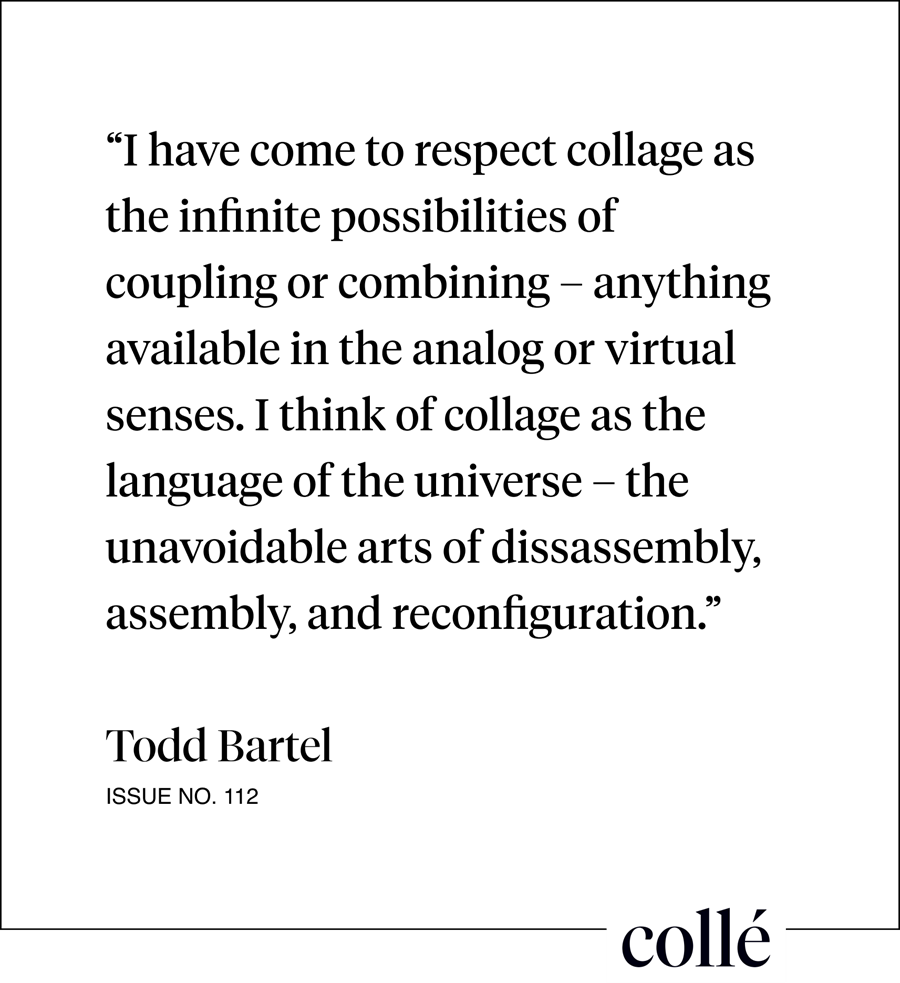
Since 2000, I have been exploring the possibilities of what I once called "puzzle-piece-fit collage." What I now call "paper-marquetry," or "interlocking collage" is a process that has allowed me to combine new ways of attaching materials that confuse and blend all three actions of collage, the finding, the minding, and the binding. Cutting all elements to sit flush results in the creation of two-sided pieces that often require specialized framing. The interlocking collage process yields uniformly flat front surfaces with irregular backs, layered with document repair tape and a variety of paper seam supports. I love to use paper, but it is a stubbornly stiff and inflexible material. I have found increased flexibility in fusing digital and analog processes with printmaking techniques and period ephemera. I collect endpapers from books and take note of the century they were created, so as to reunite period ideas with paper from the same era.
This combination allows for the creation of facsimile materials, which has greatly expanded the options I have when constructing my collages. While I collect and use original ephemera, I routinely "re-publish" much of the material I find so I can size it accordingly before I cut it up. (This is one way that I can get around the problem of finding things in books that aren't the size I need them to be.) The processes I use often allows me to make multiple versions of the same image becasue I stack several pieces of paper – of different hues and qualities – and cut the same image simultaneously through all the layers, which allows for an exchange of identically cut pieces and a reconstitution of multiple images multiplied by the number of pages in a given stack. (Two short documentaries on my process are available in my LinkTree.) Even after two decades of exploration, I continue to unlock new possibilities all the time!
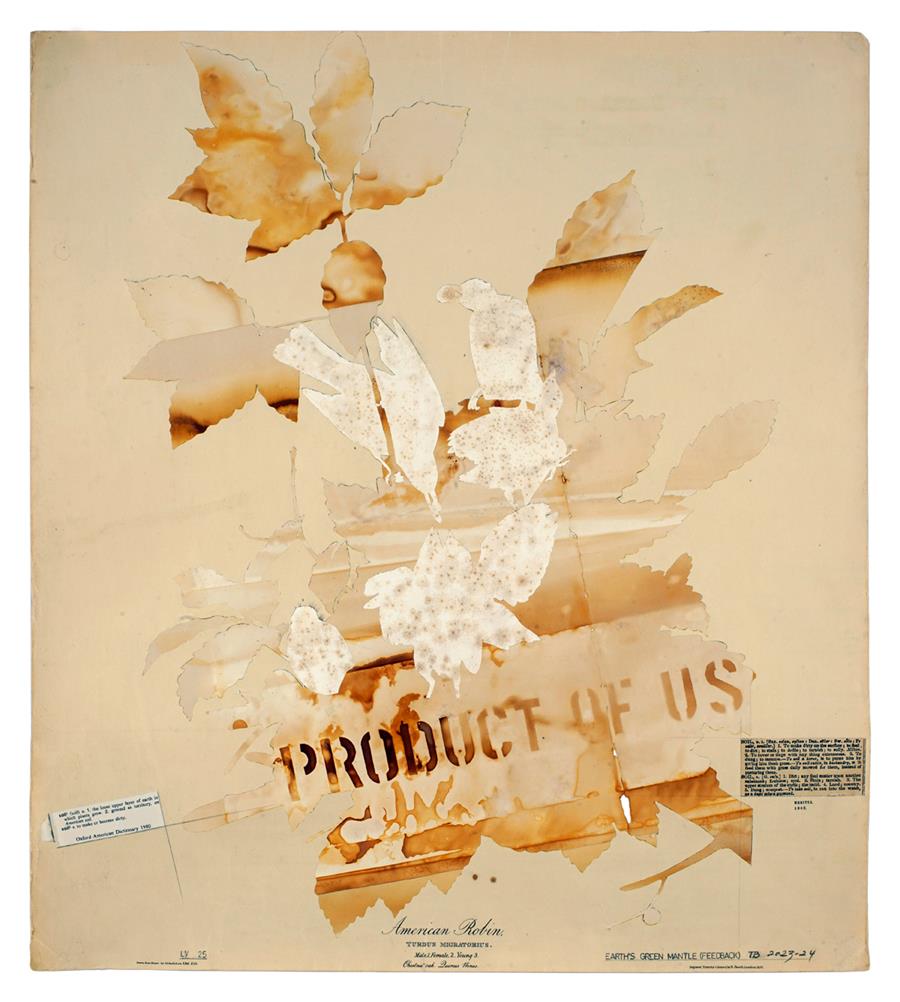
[Landscape Vernacular 25], 2024
Interlocking collage; recto: rust transfer on blank 19th-century sketchbook pages and weathered aviary book page cuttings set into John James Audubon’s American Robin No. 27, Lithograph 1832 (printed by R. Havell) with pencil and inset xerographic transfers; verso: xerographic transfers, pencil and document repair tape on back of John James Audubon’s American Robin No. 27,
lithograph, artist-made frame, 18 x 16 in.
I have come to respect collage as the infinite possibilities of coupling or combining – anything available in the analog or virtual senses. I think of collage as the language of the universe – the unavoidable arts of dissassembly, assembly, and reconfiguration. A collage is a cohesion of disparate things made into a whole that can situate any combination of materials – physical or intellectual – into a multi-perspectival coalescence. Collage is the most democratic and holistic way we can visualize our existence and the myriad ways we perceive it.
I am vexed and galvanized by the removal of humans from the contemporary definition of the word "nature." Collage – the art of connection – is a way to demonstrate the falsehood and hubris of defining the universe in such a short-sighted way.
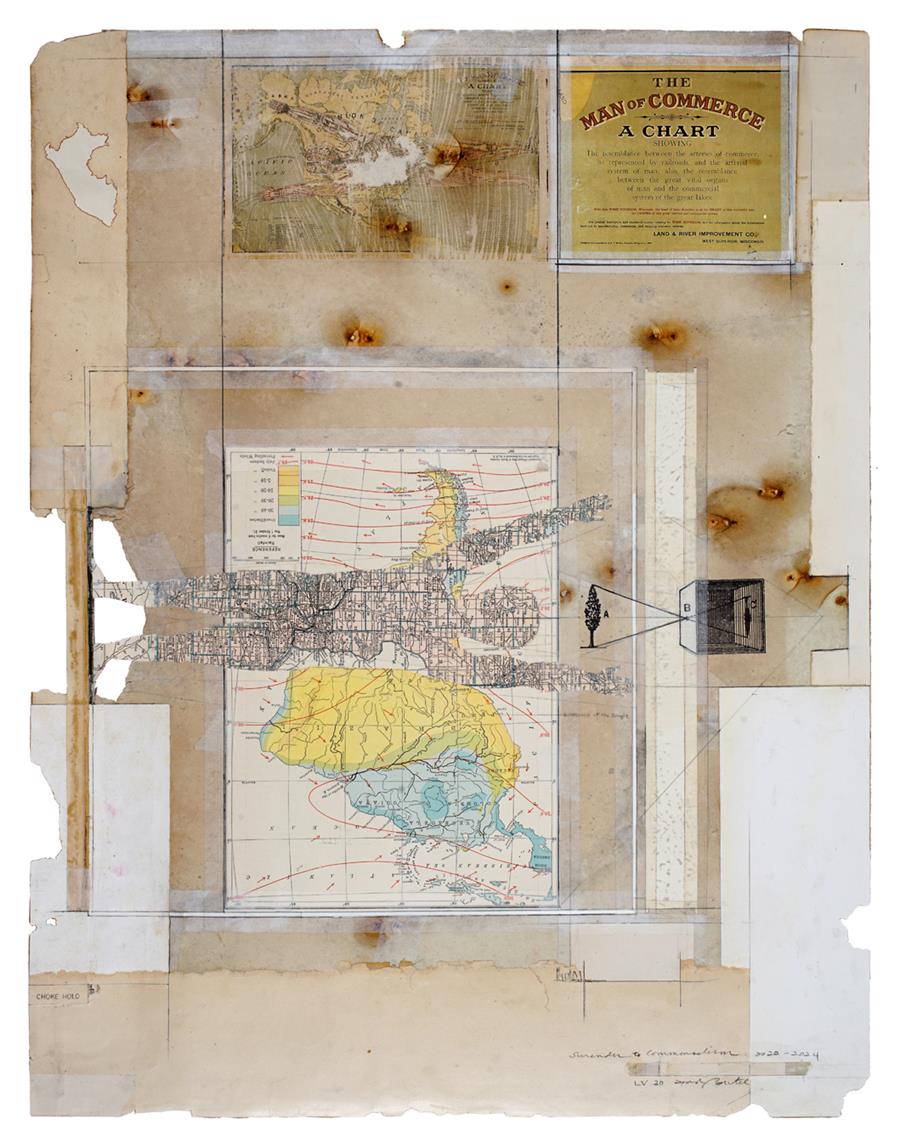
[Landscape Vernacular 20], 2022-23
Recto: interlocking collage, xerographic prints on 19th- and 20th-century endpapers and Economic Map of South America" (The New•World Loose Leaf Atlas, C. S. Hammond & Company, Inc. 1926)
and map graticule cuttings inserted into weathered library bulletin board paper;
verso: xerographic transfers on weathered library bulletin board paper, pencil and xerographic prints on 19th and 20th-century end-page cuttings, document repair tape, Yes glue, pencil on end-page cuttings for seam-support; artist-made hinged frame.
25.875 x 20 in.
For each series, I collect different kinds of materials, which necessitate the development of new strategies to match the new body of materials I am working with. In this way, I am always learning new things about the potential collage. For my Landscape Vernacular series, I try to collect first editions that I scan when I need to create a facsimile of a particular page, image, or text. For example, I frequently scan definitions from my copy of Webster's 1846 dictionary. I recently purchased the 1872 6th edition of Darwin's "Origin of Species" – the last edition he worked on before his passing – for my most recent collage in the LV series, "Another Scapegrace Turning Point (Cole's Erratics)."
I used a first edition of Rachel Carson's Silent Spring for "Earth's Green Mantle (Feedback)," and I have just obtained a 1877 copy of George P. Marsh's "The Earth Modified by Human Action" for a project I have just begun working on. Because I use xerography as my means for printing or transferring images and texts to period paper, I sometimes create a digital facsimile of an engraving for a painting I want to reference that does not have a corresponding engraving. For example, I made an engraving-looking digital image of Thomas Cole's "The Course of Empire – The Arcadian or Pastoral State (1831), for the centerpiece of "Another Scapegrace Turning Point (Cole's Erratics)." When I exhibit the Vernacular series, I also showcase these collected source materials.

[Landscape Vernacular 7], 2014
Interlocking collage; recto: 19th-century endpapers, marbled papers, xerographic prints on vintage endpapers, xerographic transfers, weathered library bulletin board paper, canceled stamp and envelope remnant, pencil, antique cellophane tape; verso: xerographic transfers, document repair tape, pencil, endpaper cuttings, Yes Glue; artist-made frame, 24.5 x 19.125 in.
I think of the Landscape Vernacular collage series as Grangerized texts, or "extra-illustrated texts," which is a direct nod to the inadvertent inventor of the modern scrapbook, James Granger. An artist that I owe a debt of gratitude to is Joseph Cornell, for his practice of creating dossiers – all of the Landscape Vernacular collages have both digital and analog dossiers. Seeing Jess Collins' "Deranged Stereopticon" and his use of puzzles in his collages at his incredible 1994 retrospective exhibition, "A Grand Collage 1951-1993," at the former Whitney Museum, directly led to my pioneering paper-marquetry techniques. I credit Roni Horn's "Another Water" as the germ seed of my practice of adding actual footnotes for my text-based resources directly on my collages.
My dear friend Michael Oatman's pioneering use of xerographic print-making in 1983 is when I first encountered the process that I am so dependent upon in my Landscape Vernacular series. But probably the most significant influence on my conceptual art practice is Mel Chin's use of materials that point to the ideas explored in a given work, such as is "HOME y SEW 9." Having deeply studied Chin's art, in turn I seek ways to interrelate ideas and images with materials and processes that all point to one another, in an effort to create what I like to call "unfoldingobjects." (One word, no space.)

[Landscape Vernacular 7], 2014
Interlocking collage; recto: 19th-century endpapers, marbled papers, xerographic prints on vintage endpapers, xerographic transfers, weathered library bulletin board paper, canceled stamp and envelope remnant, pencil, antique cellophane tape; verso: xerographic transfers, document repair tape, pencil, endpaper cuttings,
Yes Glue; artist-made frame, 24.5 x 19.125 in.
I am interested to see where our human journey with the real and the virtual will lead us. As troubling as AI is, with its regular and well-documented exploitation of natural resources, I am also interested in the potential of AI image generation – a technology that is thoroughly embedded in collage practices. I wish AI would credit all its sources each time the technology is used. I wish the user of AI technology could input their own imagery to cull from, but in lieu of that, I am curious how to coax and tease out from the technology, as one necessarily has to "work with" pulling from unknown sources. I am exhibiting my first AI piece at the RE-BOP! exhibition in Chicago this summer.

About the Artist
Todd Bartel’s professional activities include artmaking, teaching, curating, research, and writing in Boston, MA, and the broader New England area. He received a BFA in painting from the Rhode Island School of Design and an MFA in painting from Carnegie Mellon University. He teaches drawing, painting, collage, and conceptual art at the Cambridge School of Weston (MA), and is the founder of the school’s Thompson Gallery. Todd was its Gallery Director, mounting 50 exhibitions until 2020. As an independent curator, Bartel has curated exhibitions at the Knoxville Museum of Art, the Art Complex Museum (Duxbury, MA), and the Academy of Fine Arts in Kolkata, India, among many galleries throughout New England. As a self-taught historian of collage, Bartel has written extensively about collage and his neologism, “uncollage.” He is a regular contributor to Kolaj magazine and The Weird Show. He has written for various exhibitions throughout the United States and abroad, including Los Raros/Las Raras, and his literary criticism has been translated into Italian, Spanish, and Portuguese.
He was an Artist-in-Residence at Weir Farm (Wilton, CT) and the Salvatore Meo Foundation in Rome in 2023. A dedicated collage-based artist since 1983, his studio practice examines language and the roles of landscape and nature in contemporary culture. Read more about Bartel's two most recent residencies: Reflections on Nature, and his at The Fondazione Salvatore Meo, both available on The Weird Show.
For Your Viewing Pleasure
What to watch, read, and experience, as curated by the Collé team.
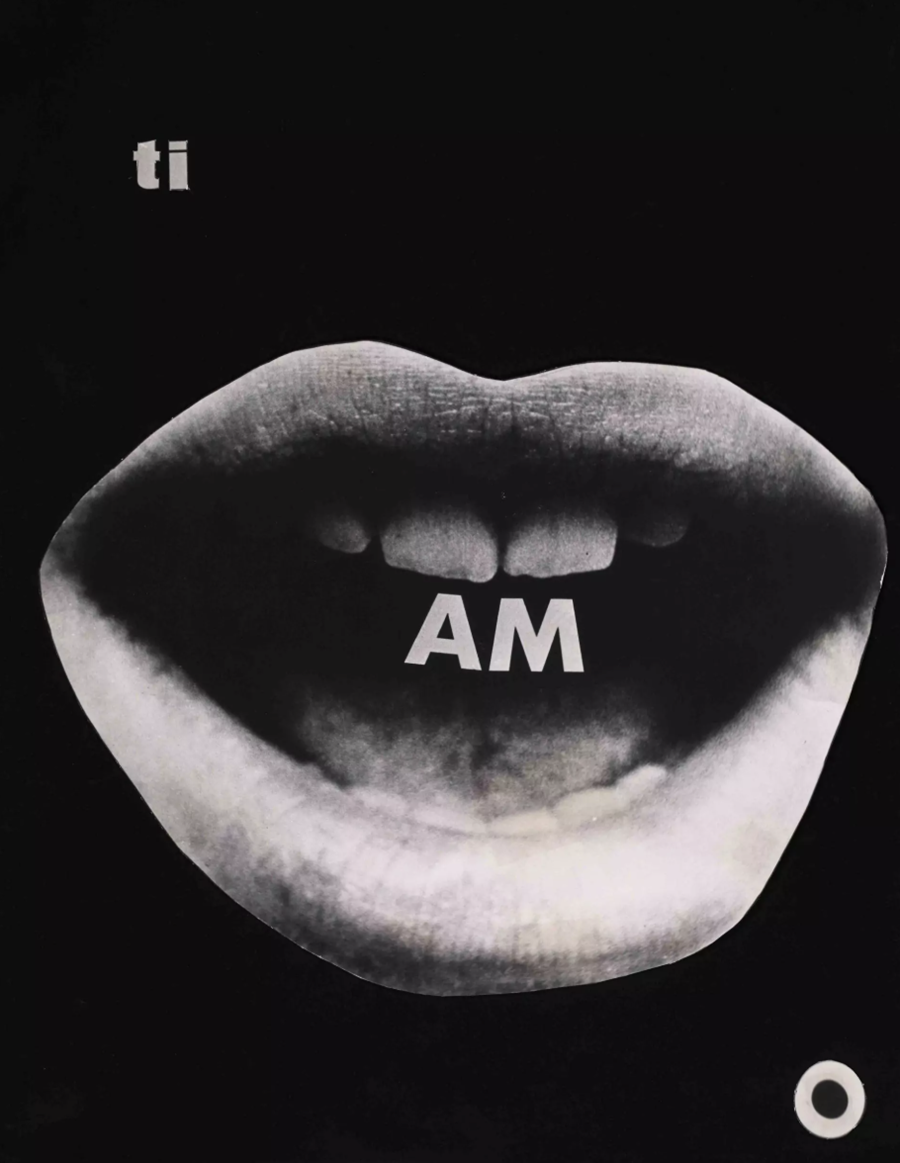
MIRELLA BENTIVOGLI (1922 – 2017) was an Italian artist, poet, and performer who worked in the field of verbal-visual poetics. Since 1965, she was active in concrete and visual poetry both as a critic and as an artist, creating compositions with words and images through collage and graphic techniques.
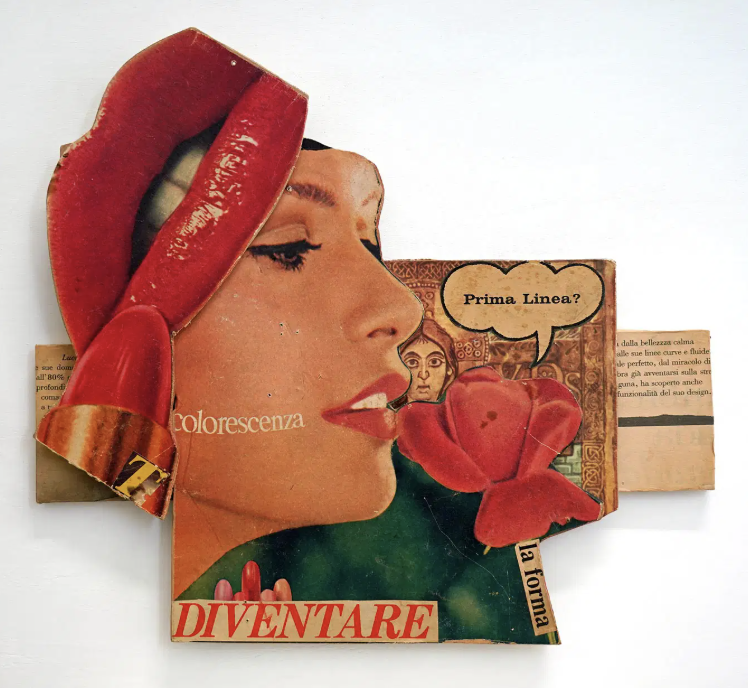
LUCIA MARCUCCI (1933–2021) was an Italian visual poet and artist associated with the Gruppo 70 movement in Florence. Her work explored the intersections of language, image, and ideology, often employing collage, photomontage, and visual poetry to critique mass media and consumer culture.
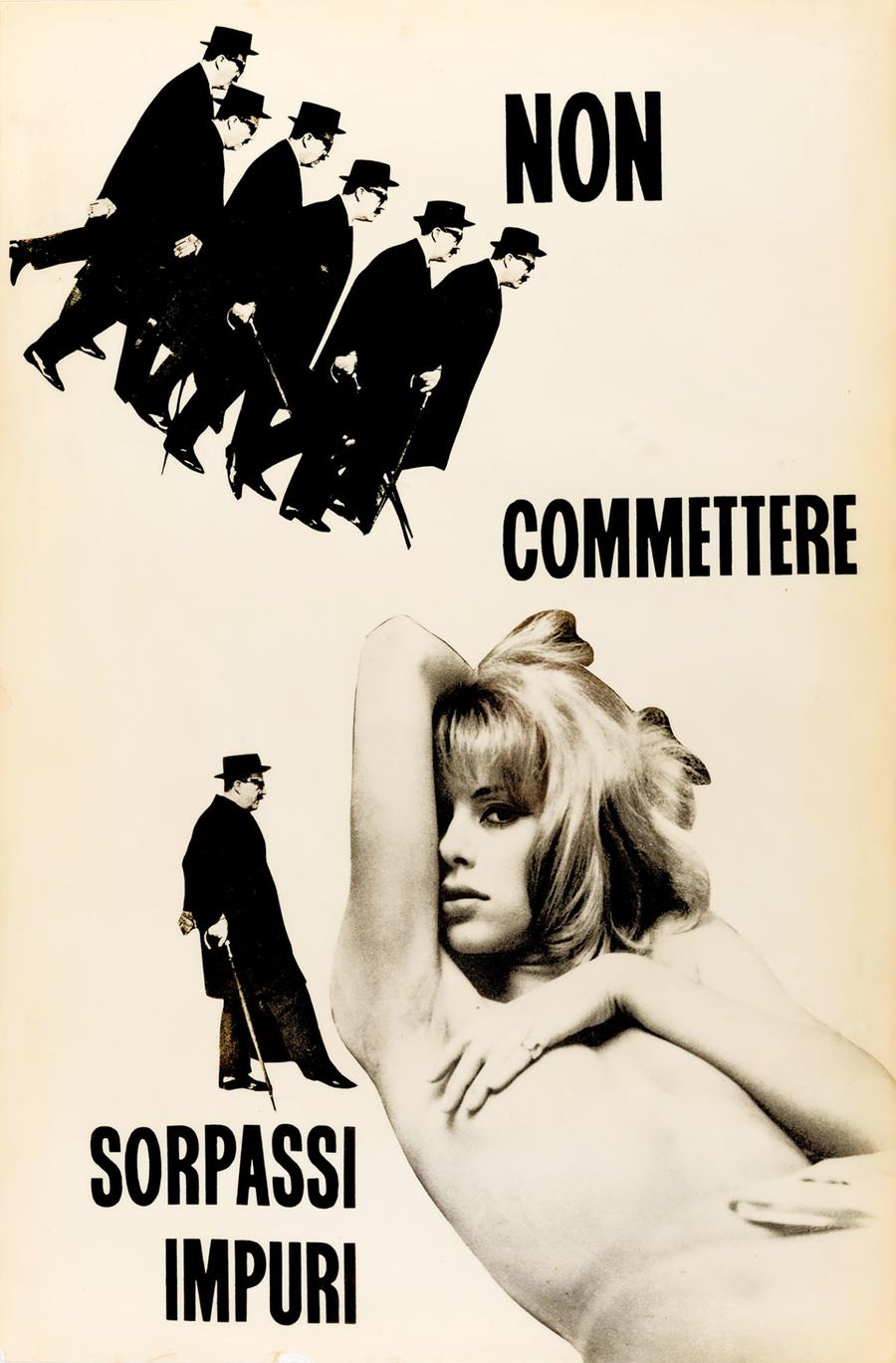
KETTY LA ROCCA (1938–1976) was an Italian artist closely associated with visual poetry and conceptual art. Beginning with collage and Pop-inflected assemblages, she later developed a distinctive body of work exploring the relationship between language, gesture, and image.
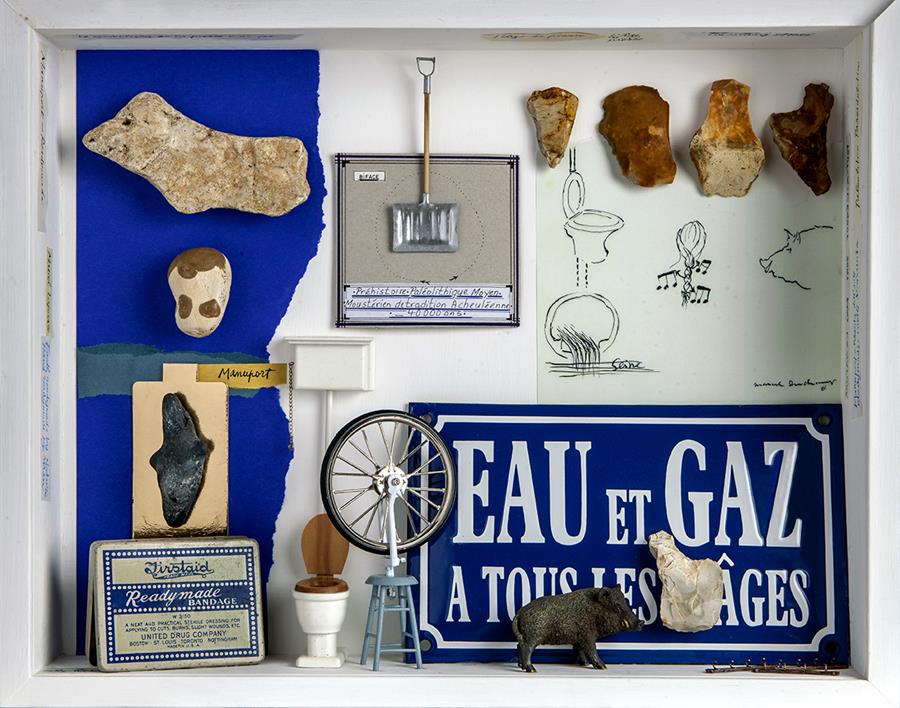
PABLO ECHAURREN (b. 1951, Rome) is an Italian painter, collagist, and writer whose practice spans comics, visual art, and cultural criticism. Emerging in the 1970s, his work bridged avant-garde traditions with popular culture, drawing on Dada, Futurism, and underground aesthetics.
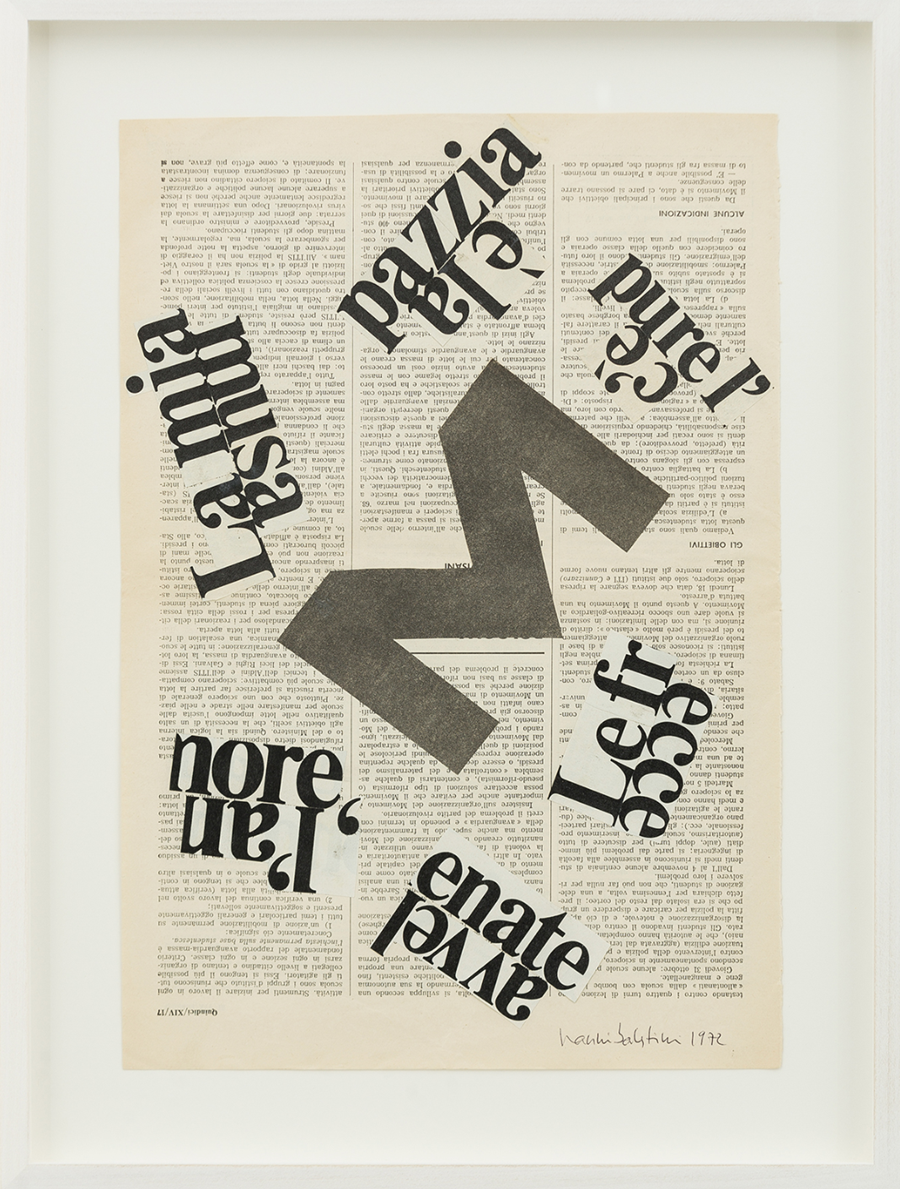
NANNI BALESTRINI (1935–2019) was an Italian poet, novelist, visual artist, and political activist associated with the Neoavanguardia movement and Gruppo 63. Known for his use of collage, both literary and visual, he explored themes of social control and the fragmentation of reality. For Balestrini, collage was not merely an artistic technique but a radical method of analyzing and dismantling language itself, revealing the hidden mechanisms of power and control that shape contemporary life.
Out and About
What to watch, read, and experience, as curated by the Collé team.
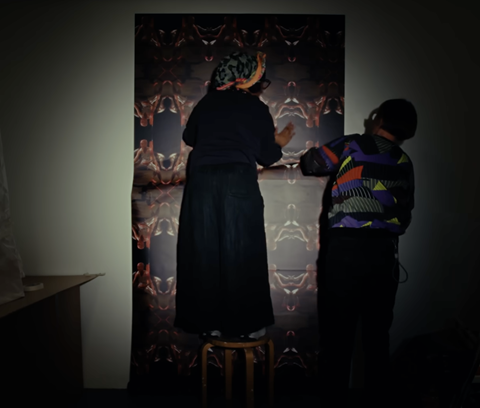
▼ WATCH
Sonia Boyce: Wallpaper
For the cover story of Ursula magazine’s summer issue, artist Sonia Boyce sat down in her studio to talk about the social, political and ethereal roles of wallpaper. Directed by Yvonne Zhang, this is the seventh installment in our Material series—which explores artists’ transformation of raw materials into finished works.

▼ READ
Sticking Together by Samantha Edwards, The Globe and Mail
Collage art is gaining momentum with people seeking offline connection. At Toronto’s Issues shop, shelves of indie magazines double as raw material. Within minutes, they’re cut apart and reassembled into one-of-a-kind collages.
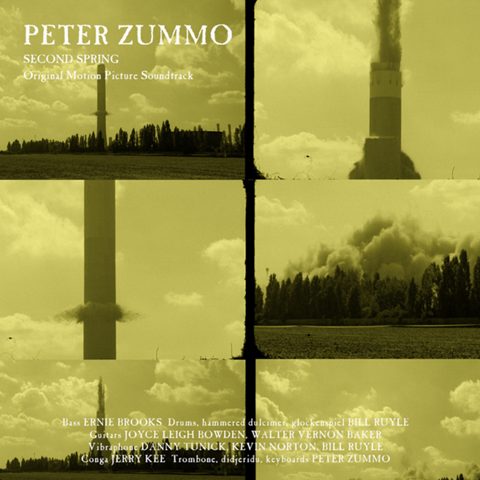
▼ LISTEN
Second Spring OST by Peter Zummo
This album unfolds like a fever dream, with shimmering minimalism and trombone-tinged textures that evoke a devotional mood. Each of its eighteen tracks, from the ghostly “Highway Brain Planet” to the pulse of “Wind Flute Plus Feminine Domain,” feels poised between a delicate restraint and a emotional resonance.
